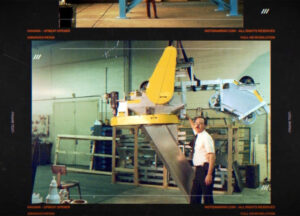The Future of Pharma? Robots.
Robotics aren’t new to pharma. A widely cited Tufts Center study suggests the average cost to create a new prescription drug in the U.S. is a whopping $2.6 billion, a 145% increase since 2010.
As a result, pharmaceutical companies have been in a race to cut costs—and time—using robotic innovations.
Why? Inventing new drugs is harder than ever. Only 12% pass FDA standards. And to even get that far demands finding a therapy in the first place, which only happens after processing millions of experiments. The labor involved is staggering, time-consuming and tedious.
Enter the Robots
They are faster. More adept at performing the same tasks as humans and they don’t get bored or exhausted. And that’s important. So important, that Novo Nordisk recently tasked Axel Johnson’s HighRes team to build a “lab of the future,” to ensure their scientists have more time to focus on creating the therapies, not processing them more quickly, like the development of a COVID vaccine and automation of testing.

“To maintain our leadership within biologics engineering we are investing in a fully automated and digital design platform.”
—
Lars Fogh Iversen, Senior Vice President,
Global Research Technologies, Novo Nordisk
“This investment is linked to our build-up in AI and advanced analytics and demonstrates Novo Nordisk’s commitment as a world-leading biologics research company.”
The New Novo Nordisk Lab HiRes Robots
In the new Novo Nordisk lab, HighRes robots will be performing tasks at a rate of 100,000 samples per day — 2,500 times more efficiently than human scientists doing the same procedure.
Yes, these are the same kinds of robots you might see used in a car manufacturing plant, and that versatility means they can do exceedingly delicate tasks, but also ones requiring tremendous dexterity. However, unlike the robotics supplied by other life science automation companies, High Res robots are modular, meaning they can be easily repositioned and reprogrammed to tackle a new task more quickly, like the development of a COVID vaccine and automation of testing.
“The combination of our capabilities, products, and vision make us the ideal partner for their digital transformation,” says Ira Hoffman, CEO of HighRes. “Our innovative scheduling and automating software will enable Novo Nordisk lab technicians to program experiments and then walk away.”
Modularity & Mobility
This ability to multitask is a key differentiator for HighRes. Not only can their robots perform one action at a time, they can begin a second task, then combine both processes and evaluate the combinations.
Which gets us to their final and most groundbreaking achievement: modularity and mobility. Because not every job is the same and requiring a lab to bend their processes to accommodate a robots’ needs is problematic.
“Our key innovation isn’t just robots—which are, after all, just a tool—but a moldable setup that can be changed over time, to fit the moment,” says Hoffman. “Our technology allows scientists to design repeatable tasks in a circle, or cell, around their robots by changing the modules (think Legos arrayed in a circle) in concert with the needs of the experiment.”
These modules lock into place and are then measured to a thousandth of a millimeter in proximity to the robot along x, y, and z axes—so that the robot can reach, touch, sample, fill or move every object in the cell around it precisely. Novo Nordisk will have dozens of such cells processing thousands of biologic compounds every month in their new lab.
And the future? That will include robots that work even more closely with people. Some will be able to move freely around the laboratory. Others will consume even less floor space, resulting in a more integrated, human-robot interface where a scientist can seamlessly hand-off tasks.
That way, Hoffman says, “scientists can do science, and our robots can do things that enable the science.”

Our Leadership
Scan QR code to watch video

2019 Annual Review
More Articles
The Parkson Story
What happens when you take a rag-tag group working out of a converted gas station in South Florida that simply won’t take no for an answer?
Read MoreCambiando las reglas del juego
Cuatro mujeres empoderadas están rompiendo barreras y remodelando el futuro de Axel Johnson con papeles más importantes y voces más fuertes.
Read MoreEl efecto dominó
Desde el área de producción hasta las altas gerencias, las muchas caras de Axel Johnson acreditan el ascenso como una característica única de la compañía.
Read More“There’s always a way to take the next step.”
—
Omar Gadalla,
Director of Sustainability & Corporate Communications



